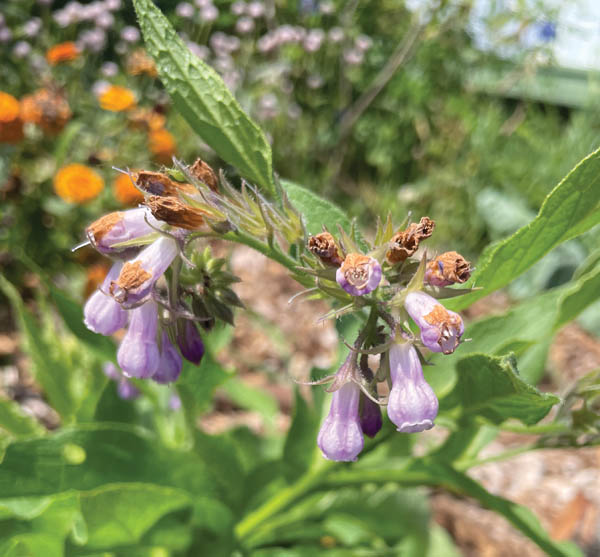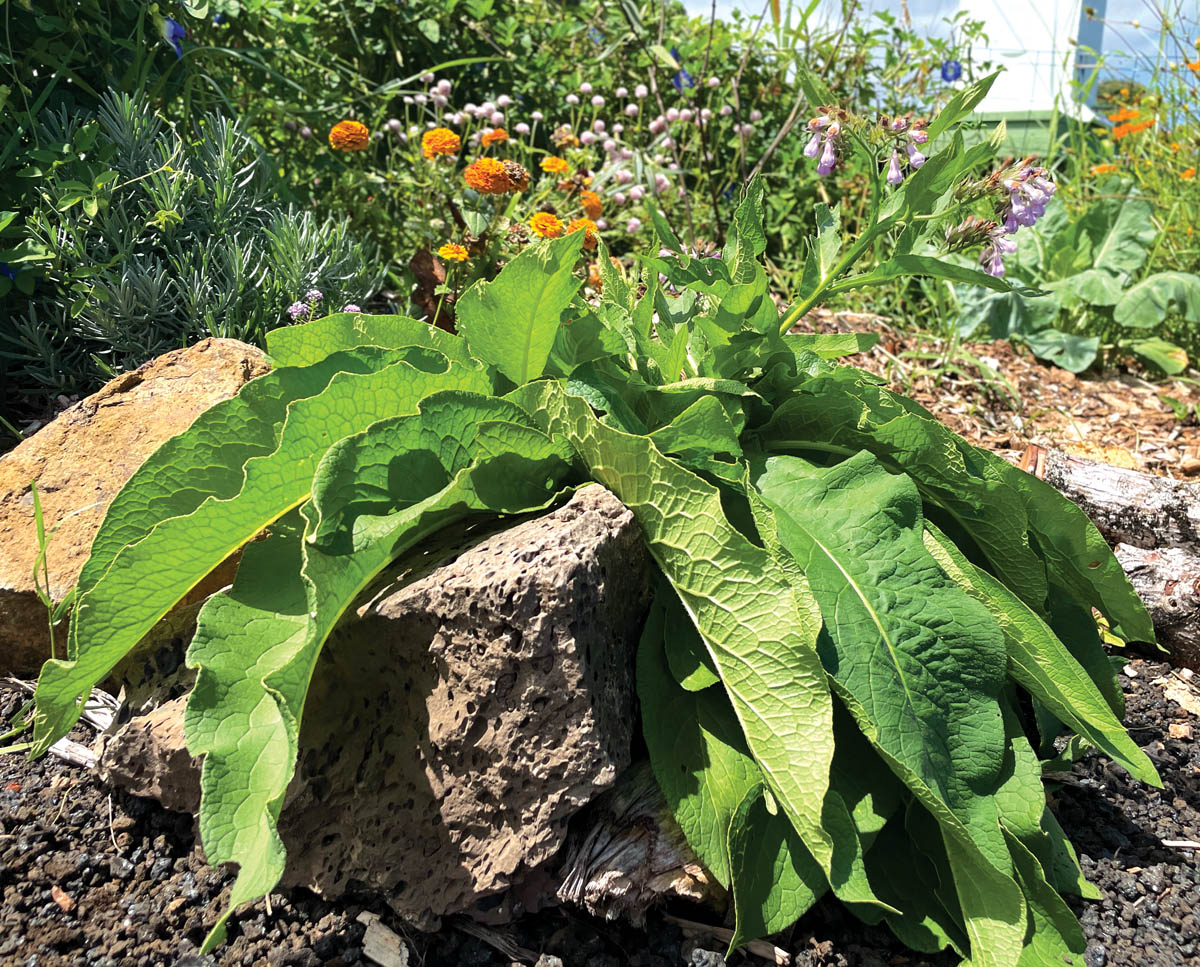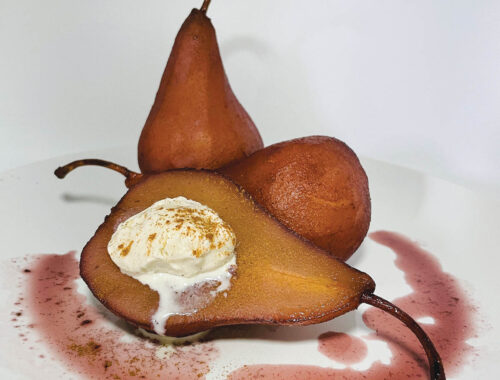
Medicinal Plants from the Garden: The Comfort of Comfrey

By Brittany P. Anderson
Green lance-shaped leaves fall over themselves in compact clusters, with a fuzz about them like a clump of rabbit ears waiting to be pet. The leaves are coarse to the touch, while purple bell flowers dangle over the grouping giving a soft whimsy as if fairies call the place home. Comfrey is a perennial herb cultivated since about 400 BC for its healing properties. It’s not only a potent medicinal plant for the body; it can also be used as a rich soil amendment.
The word comfrey comes from Latin names confirma, meaning the uniting of bones and confervere, grow together. Comfrey was an appropriate name for such a plant used from ancient Greece and throughout history for healing broken bones and wounds. The famous Roman naturalist Pliny the Elder details his experimentation with comfrey, noting that the water from boiled comfrey roots creates a sticky paste that can glue skin lacerations back together.
By the 1500s, comfrey was used to treat everything from wounds to respiratory illnesses, hemorrhoids to gangrene as a poultice, tea, or syrup. Comfrey leaves were added to stews and strong broths to heal internal diseases. It is only recently that comfrey’s medicinal qualities have come into question, and like all medicines, should be used with caution.
Allantoin, which aids in cell formation, is the chemical compound that gives comfrey its healing abilities. Extracted or synthetic allantoin is added to modern-day lotions, cosmetics, and pharmaceuticals, but the plant itself has fallen out of favor by today’s contemporary medicine community.
Permaculture enthusiasts, however, know that comfrey is the bedrock to a healthy garden. Comfrey is highly adaptable to soil conditions and does best in full sun. Because of the deep root system, comfrey leaves do not easily wilt and tolerate drought conditions.
There are three notable comfrey species from the genus Symphytum. Common or wild comfrey, Symphytum officinale, native to England and favored medicinal variety, hence the “official” in its name. The most common type of comfrey found in North America is Quaker comfrey, a natural hybrid from Symphytum officinale, and prickly comfrey Symphytum asperum Lepechin. Quaker comfrey was imported in 1954 into Canada as a forage for animals, and most of the comfrey grown throughout the United States can be traced back to these cuttings.

Comfrey is rarely cultivated by seed; instead, it is propagated from root cuttings, divisions, and transplanting. A mound of comfrey can be divided several times quite easily, and the transplanted sections establish quickly when root cuttings are larger. As a perennial, the lifespan of one plant can easily be 20 years.
In the garden space, comfrey is notoriously pest resistant. Borders of comfrey ward off pests while their roots break up hard soils, making it easier for their neighboring plants. Another common practice in permaculture is to cut comfrey back and use the leaves as a green compost. Compared to animal manures, comfrey has much less nutrient value, but it is more bioavailable for the plants and avoids cross-contamination of produce. Permaculture enthusiasts love comfrey as an all-natural NPK fertilizer, a great alternative to chemicals for the home or organic gardener.
Comfrey tea is made by steeping leaves in water for a few weeks and then used as a foliar spray to ward off pests. The tea smells terrible, but simply strain the liquid and use it in a 1:10 ratio for spraying.
When flowering, a leafed stalk springs up from the mound of leaves. Small bell-like flowers hang in little groupings attracting pollinators. Flowers come in different colors depending on the species. Symphytum officinale is commonly called the “comfrey with the white flowers” in texts throughout history due to its creamy white flowers. The most common comfrey flower color is an attractive pinkish purple.
Growing comfrey in the home garden on Hawai‘i Island is as practical as it is versatile. Creating a brew from comfrey leaves increases soil health and protects plants from nibbling pests. Best of all, comfreyʻs medicinal heritage is appreciated by herbalists for its potent cell regenerating properties.
Was that a fairy or a butterfly that just stopped by the comfrey? Perhaps it was just the ocean breeze rustling the amethyst-colored bells of the comfrey.



